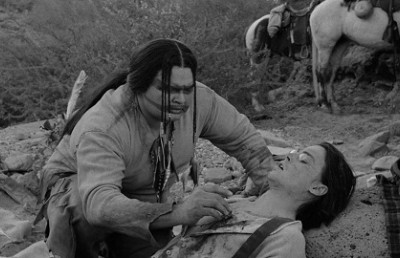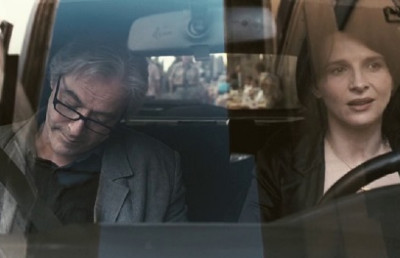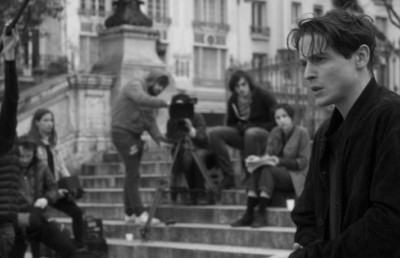The Passion of Joan of Arc: The Censorship and Rediscovery of a Silent Film Classic
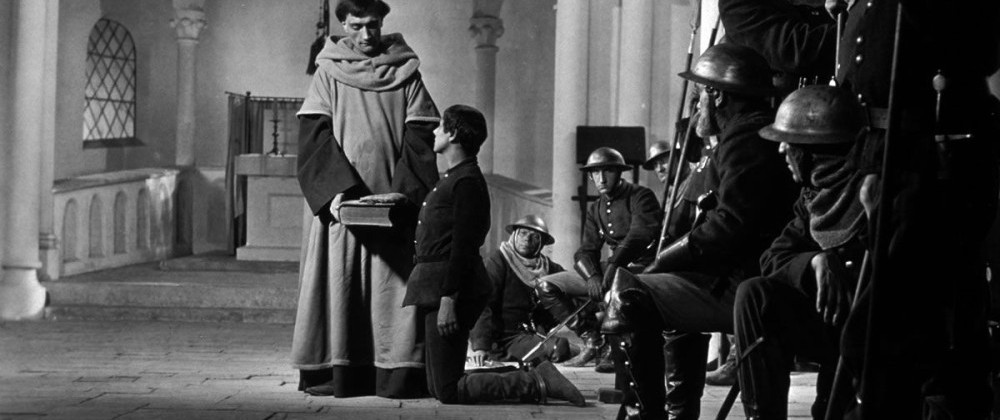
The Passion of Joan of Arc (Image source, Criterion)
Author’s note: While popularly known in English as Joan of Arc, the actual name of both the historical figure and the character in Dreyer’s film is Jeanne d’Arc. For this reason, I have chosen to refer to both as Jeanne in the course of this essay. For instances wherein the character’s name appears in film titles, however, I’ve defaulted to Joan, as this is the spelling by which the movies themselves have become known and recognized.
In 1926, Danish filmmaker Carl Theodor Dreyer’s Master of the House became a runaway hit in France, playing to ecstatic audiences in fifty-seven Parisian cinemas and seventy-two provincial theaters. Its success caught the attention of financiers at the production company Société Générale des Films, who shortly thereafter contacted Dreyer with the prospect of making a historical movie. Desiring a picture about a French national heroine, the producers suggested as subjects Catherine de Medici, Marie Antoinette, or Jeanne d’Arc. Dreyer chose the latter, having been fascinated by the famed peasant girl since her 1920 canonization (Larson, pp. 54-5) and unfazed by nationalist sentiment that a non-Catholic foreigner couldn’t —in the words of competing screenwriter Jean-José Frappa— present Jeanne in “the true French tradition.” (The Many Versions of The Passion of Joan of Arc)
Cultural depictions of Jeanne d’Arc in the 1920s—including the film authored by Frappa: Marco de Gastyn’s The Marvelous Life of Joan of Arc (1929)—generally focused on her transformation into a military leader in France’s Hundred Years’ War against England. Dreyer’s producers might have expected him to follow suit, having bought the rights to Joseph Delteil’s hugely popular 1925 book The Life of Joan of Arc. (Kinsey, p. 96) In the end, the director chose to focus on the final eighteen months of Jeanne’s life, to which Delteil had dedicated a mere three chapters. (Van Ness, 292-3) Rather than present scenes of spectacle, he dramatized Jeanne’s post-capture trial, wherein the devoutly Catholic warrior claimed to Burgundian (English-allied French) church authorities that God sent her to save France. Under political pressure from English soldiers, Jeanne’s judges, Roman Catholics themselves, target her religious convictions, accusing her of serving the devil and threatening execution if she doesn’t sign a confession stating as much. Fittingly titled The Passion of Joan of Arc, Dreyer’s film depicts Jeanne d’Arc as a spiritual person whose patriotism was usurped only by her faith—and who chose to face death rather than deny that most important to her.
From its 1928 premiere in Copenhagen, Denmark, The Passion of Joan of Arc was recognized for its devastating emotional content, experimental photography (much of the drama is shot in close-up to emphasize Jeanne’s psychological battle with the judges), and the extraordinary lead performance by Renée Falconetti. Its reputation as a silent film masterpiece persisted through the mid-twentieth century despite the picture, for decades, only being available in various mangled forms. While Danish audiences in 1928 saw the movie frame for frame as Dreyer intended, the majority of spectators thereafter knew it through alternate cuts that had been censored, re-edited, and—in most cases—compiled from footage initially rejected by the director; and neither Dreyer nor his star lived to see the 1980s, when their intended version would be rediscovered for later generations.
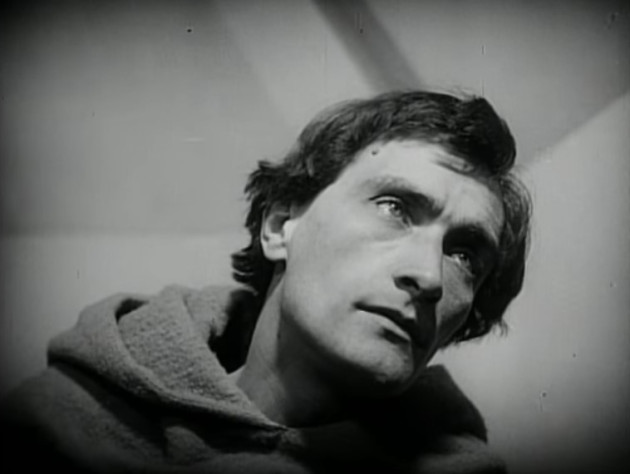
Antonin Artaud as Massieu (image source ,Criterion)
Censorship and Disaster
The Passion of Joan of Arc was shot in sequence from May to November 1927, ultimately consuming two hundred and seventy-six thousand feet of raw film stock and a budget of seven million francs. Following several months of post-production and a private screening for industry representatives in Paris, (Kinsey, p. 97) two negatives were shipped to Dreyer’s native Copenhagen for the world premiere on April 21, 1928. (Pipolo, p. 301) Approved without changes by the Danish censors, Joan enjoyed more than a dozen screenings at the Palads Teatret (a theater boasting 1,930 seats) before running an additional week at the Odeon Teatret. (Larson, pp. 57-8)
The French censors, however, were quick to demand changes. As Dreyer remembered, “[T]he company’s managers decided that the [film] should be shown at a preview to a party of 70 to 80 specially selected and impartial intellectuals . . . to find out if there were scenes or sequences which might be offensive or unhistorical, as there was time to make changes before the film was shown to the great public.” (Pipolo, p. 306) In addition to shots deemed in poor taste (e.g., Jeanne’s arm being bled to quell a fever), French authorities ordered the removal of scenes depicting religious hypocrisy—namely one wherein the lead bishop proclaims compassion for Jeanne, only to withdraw his hand from hers and refuse her the Holy Sacrament unless she provides the confession he wants. Shortened by eight minutes, The Passion of Joan of Arc played at the Salle Marivaux on October 25 and was met with markedly cooler reception than in Denmark. Its reputation improved when Dreyer’s original cut screened eight months later. Supporting actor Antonin Artaud noted how “the complete version . . . changed the general opinion of this overwhelming film.” (Kinsey, p. 97; Larson, p. 58)
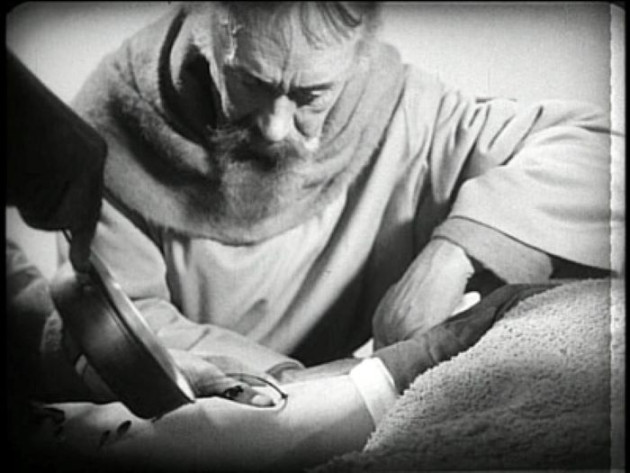
Bloodletting (image source, Criterion)
The Passion of Joan of Arc ends with its heroine engulfed in flame—a fate shared by many silent films around the world. Inadequate storage and the combustible nature of antiquated celluloid resulted in hundreds of films destroyed in studio fires throughout the early twentieth-century. Joan was not spared this phenomenon. Of the two known negatives made of Dreyer’s original cut, one is known to have been shipped to Berlin’s UFA Studios, where it was lost in a fire on December 6, 1928. Unable to find the second negative and believing his definitive version gone, Dreyer convened with editor Marguerite Beaugé to reconstruct the movie using outtakes. (Kinsey, p. 98) Given Dreyer’s average of shooting five to ten takes (Pipolo, p. 303) (and actress Falconetti’s insistence on reshoots after viewing daily rushes), (Lerner, p. 66) enough material remained to construct a new print most spectators found indistinguishable from the original—though to the director the differences were glaring. (Larsen)
Numerous release prints and a few additional negatives were struck from this second version, though the film again encountered censorship when distributed in England. In addition to balking at the depiction of British soldiers, the U.K. censors demanded cuts made to Jeanne’s execution as well as the bloodletting scene their French counterparts objected to. The Passion of Joan of Arc was eventually shown to the Film Society of London on November 6, 1930, but not before the imported negative of Dreyer’s second version was lost—when another fire consumed the laboratories of G.M. de Boulogne-Billancourt in 1929. (Kinsey, p. 98; Larson, p. 59)
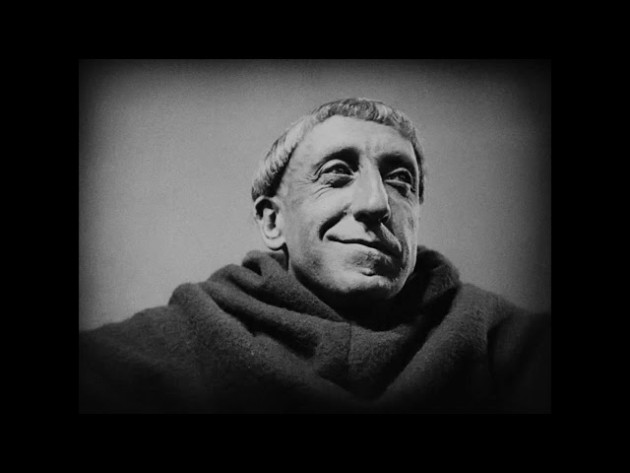
Villainous clergy (image source, Criterion)
Exported Versions
Over the next few decades, The Passion of Joan of Arc reached new audiences via newly mangled prints made for foreign distribution. In March 1929, the film came to the United States supervised by producer Sherman S. Krellberg. Krellberg’s past credits included serials, low-budget features, and some of Fritz Lang’s early U.S. efforts, and he was quick to take creative liberties with the silent Joan —considering the recent takeover of sound in the American film market. After shortening the picture by a reputed two to six minutes, he deleted all intertitles in favor of voiceover by radio personality David Ross. In spite of these changes, Joan, labeled in advertisements as an “English Talkie,” (Kinsey, pp. 98-9) won additional acclaim; the New York Times’s Mordaunt Hall championed the “conspicuously fine and imaginative use of the camera” and Falconetti’s “gifted performance.” (Hall)
The most infamous re-edit came twenty-two years later. In 1951, French film historian Joseph-Marie Lo Duca discovered an intact negative of Dreyer’s second version (one that escaped the fire in England) in the vaults of Gaumont Film Company and took it to the Cinémathèque Française to prepare a re-release. He replaced intertitles with subtitles whenever possible—using lip readers rather than Dreyer’s original dialogue cards for reference. (Larson, p. 64) In cases where subtitles weren’t feasible, new intertitles were created. Going against Dreyer’s preference of plain white font against black backgrounds, Lo Duca set text against shots of church pews, stained glass, and fire. Most controversial, however, was the decision to add a sonorized score and expository narration. Although original music had been written for Joan’s Paris premiere, Lo Duca concocted a mélange score of various classical works, claiming Dreyer had personally expressed “the desire to see his images ‘immersed’ in the music of J.S. Bach, Vivaldi, and Tomaso Albinoni” (Pipolo, p. 308).
The Lo Duca version first played at the Paris experimental film house Cinema D’Essai in March 1952. (Larson, p. 67) Renée Falconetti had died in Argentina six years earlier; and while Dreyer likely never saw the American version of The Passion of Joan of Arc, he vociferously objected to Lo Duca’s tampering. “It is simply horrible,” he said regarding the score and new visuals. “[W]rong music, wrong sound … gothic windows and other things of the same sort totally deceiving; there are no words which can express the way Lo Duca has made my film on Joan of Arc banal.” Although Dreyer also made his complaints known to the president of Gaumont (“[none of the added backgrounds] has anything to do with the style of the film.”), it was this cut that’d remain mostly widely circulated for thirty years. (Pipolo, p. 309; Larson, pp. 65-7) Carl Dreyer passed away on March 20, 1968 and thus never lived to see his personal cut rediscovered by film lovers around the world—or learn of the bewildering locale from which it would be given new life.
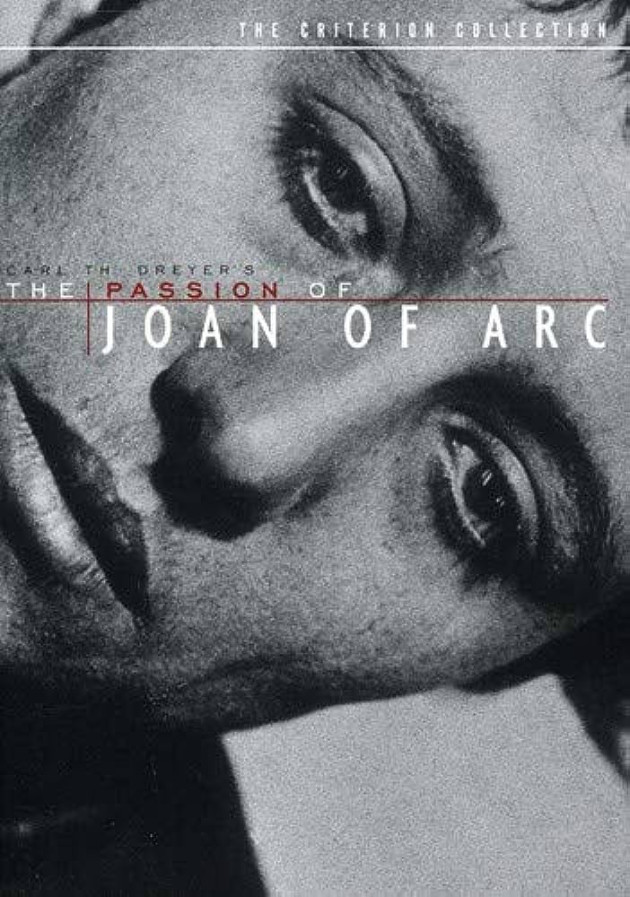
Image source, Criterion
Rediscovery
In autumn 1981—thirteen years after Dreyer’s death —a package containing ten film cans arrived at NFI (Norwegian Film Institute). It had been shipped from the Diekmark Mental Asylum in the Oslo suburb of Asker, by a workman claiming to have uncovered the reels in a closet there. The shipment sat untouched for three years—as the institute’s staff combed through other movies, poring into their archives—its content finally examined in 1984. That June, while attending a meeting at the International Federation of Film Archives Congress in Stockholm, Danish Film Museum director Ib Monty was approached with exciting news. The package from Asker contained not only a nitrate copy of Joan —along with nine unrelated short films—but the original Danish censorship approval card dated April 21, 1928. (Kinsey, p. 101) As the senior archivist from NFI proclaimed, “I think that we have found an original print of (The Passion of Joan of Arc).” (Larson, p. 69)
Publicity came with mass speculation as to how the film—which scholar Stephen Larson claims had never been exhibited publicly in Norway (Larson, p. 70)—ended up in its place of discovery. Many stories in the press were, charitably put, sensationalized: the Manchester Guardian Weekly claimed Dreyer donated his film to the asylum as a shock therapy tool. (Pipolo, Cineaste, p. 21) The more plausible explanation points to Harald Arnesen, the asylum’s late director. An amateur historian and film collector in his spare time, Arnesen had published a book on French revolutionary leader Jean-Lambert Tallien around the time of Joan’s initial release, and he was furthermore acquainted with private film distributor Henrik Refsland. (Larson, p. 70) What’s more, Arnesen was known to screen movies at his hospital for patients, staff, and fellow historians, (Kinsey, p. 100) and documents found in the Asker film cans suggest it had been shown at the asylum on more than one occasion. (The Many Versions of The Passion of Joan of Arc) When Arnesen passed away in 1953, his movie collection was seemingly stowed away and forgotten until its rediscovery.
In autumn 1984, decades since its last public exhibition, the original director’s cut of The Passion of Joan of Arc was seen again, this time in Verona. (Kinsey, p. 101) In August the following year it would make an appearance at Denmark’s Sixth International Odense Film Festival before gaining new levels of international attention at the Toronto International Film Festival that September. (Larson, p. 70) And now, thanks to the efforts of film restoration experts and home media distributors such as Eureka! and the Criterion Channel, Carl Theodor Dreyer’s masterpiece shall hopefully endure—frame for frame as it was intended to be seen—for future generations of film fans.
Bibliography
Hall, Mordaunt. “POIGNANT FRENCH FILM; Maria Falconetti Gives Unequaled Performance as Jeanne d’Arc The Questioning. Original Direction. A Wonderful Face. ‘The Divine Lady.’ Poor Comedy.” New York Times 31 March 1929
Kinsey, T.A. “The Mysterious History and Restoration of Dreyer’s ‘The Passion of Joan of Arc.’” The Moving Image: The Journal of the Association of Moving Image Archivists Vol. 1, No. 1 (Spring 2001), pp. 94-107
Larsen, Lisbeth Richter. “The different versions of ‘Jeanne d’Arc.” Carl Th. Dreyer 23 March 2010 https://www.carlthdreyer.dk/en/carlthdreyer/films/different-versions-jeanne-darc
Larson, Stephen. “Risen from the Ashes: The Complex Print History of Carl Dreyer’s The Passion of Joan of Arc (1928).” The Moving Image: The Journal of the Association of Moving Image Archivists Vol. 17, No. 1 (Spring 2017), pp. 52-84
Lerner, Carl. “‘My Way of Working is in Relation to the Future’: A Conversation with Carl Dreyer.” Film Comment Vol. 4, No. 1 (Fall 1966), pp. 62-7
Pipolo, Tony. “Joan of Arc: The Cinema’s Immortal Maid.” Cinéaste Vol. 25, No. 4 (2000), pp. 16-21
Pipolo, Tony. “The Spectre of ‘Joan of Arc’: Textual Variations in the Key Prints of Carl Dreyer’s Film.” Film History Vol. 2, No. 4 (Nov.– Dec., 1988), pp. 301-324
The Many Versions of The Passion of Joan of Arc. The Criterion Collection Blu-ray, 2018
Van Ness, Wilhelmina. “Joseph Delteil: ‘The Passion of Joan of Arc.’” Literature/Film Quarterly Vol. 3, No. 4 (Fall 1975), pp. 292-298



